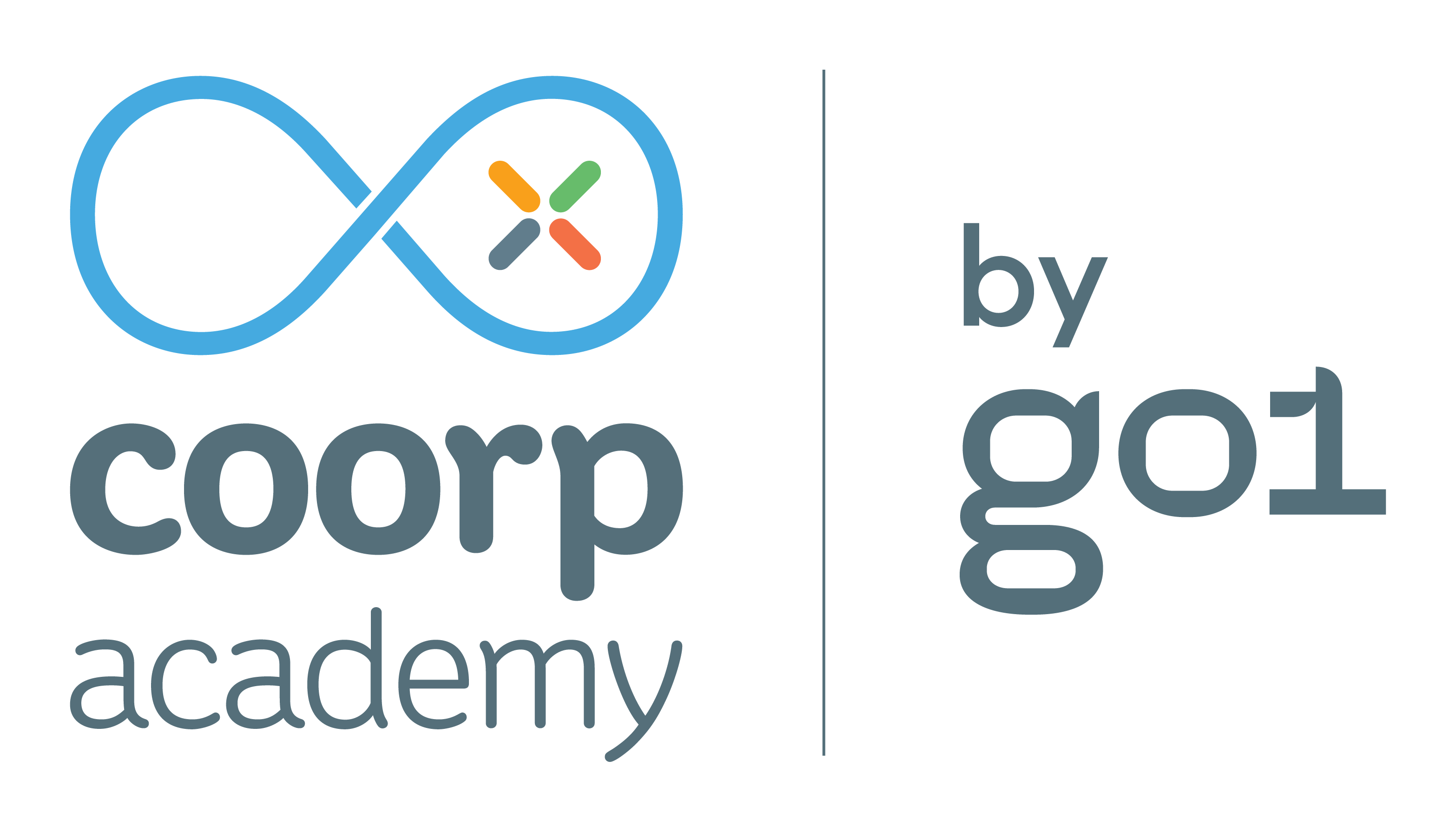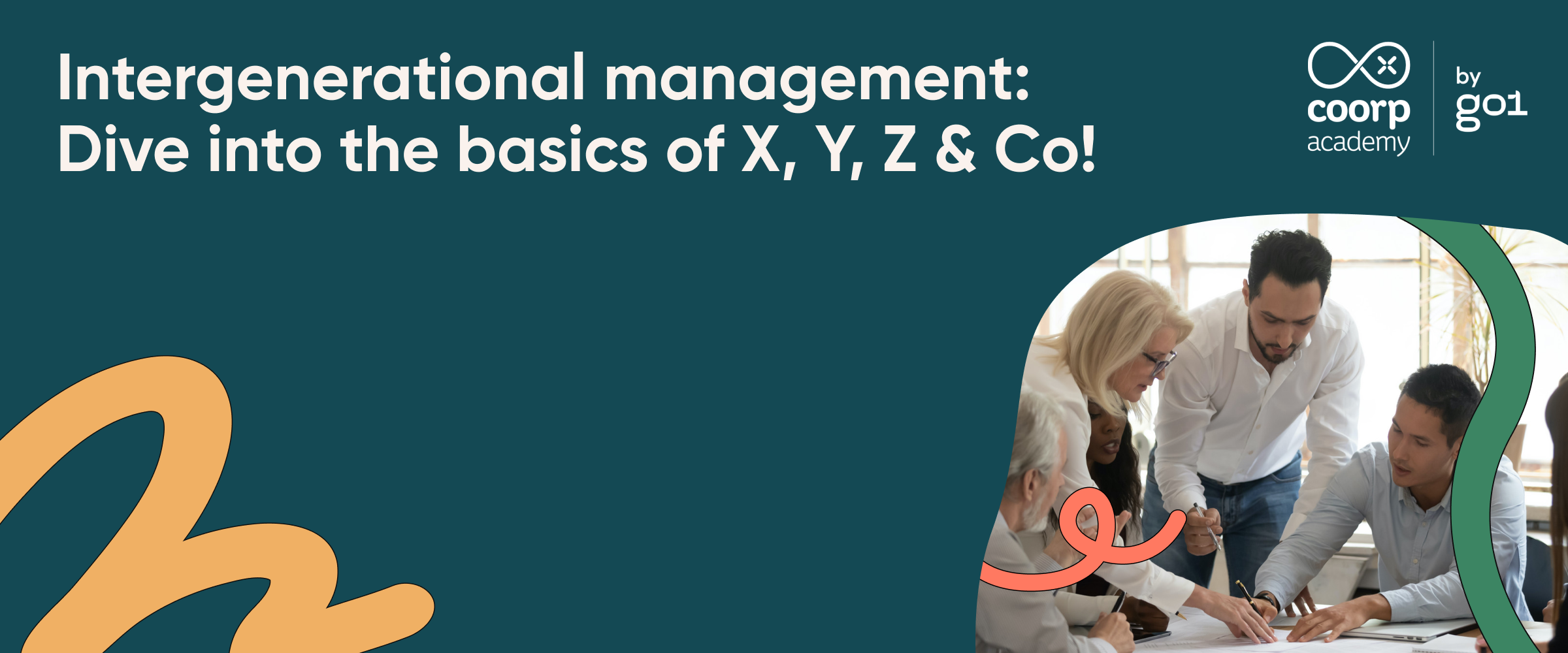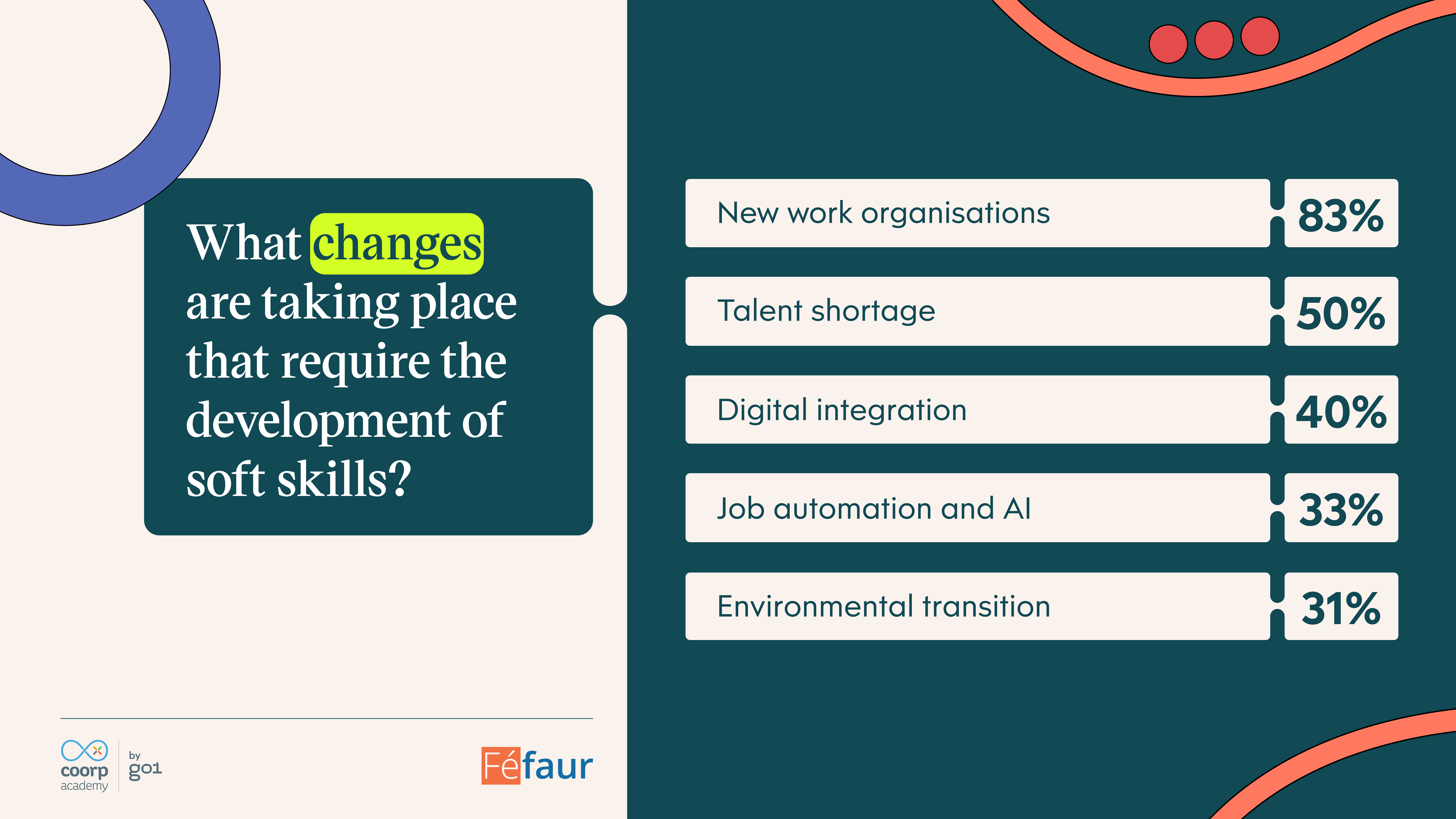How to perpetuate agility rituals remotely? The feedback example
Learning Innovation

Our content partner Numa organized a webinar on Friday 27th 2020 with Coorpacademy, as the first episode of the webinar series Learn @ Home. Claudio Vandi, Head of Learning at Numa, told us about how to perpetuate agility rituals remotely and how feedback can help to maintain the social link with your coworkers during those unprecedented times.
Learn @ Home is a webinar series launched by Coorpacademy which will give you tips to make the confinement period an efficient one.
In this article, you will find a recap of the webinar.
Why feedback, and why using feedback remotely?
Giving feedback is not a new concept. But why are we talking about it so much nowadays? Gallup, the research institute on management and future of work which publishes studies on a regular basis, recently came up with a book called It’s the Manager, written by Jim Clifton and Jim Harter. The book contains the following:
“Leaders’ priority must be to help their managers becoming coaches: by doing regular one-to-one meetings (quick meetings, individually, weekly meetings with each and every one member of your team) and give feedback regularly.”
This is part of the manager’s toolbox – not a new way of management. There are cases where being direct is more useful, by providing guidelines or by helping. This being said, creating these regular feedback moments is becoming more and more important, especially in the new agile ways of working. Knowing how fast our businesses, our products, our services, our jobs are transforming, an annual performance review is not enough anymore. If we want to improve, to upskill in this fast-paced environment, feedback is a very efficient way to do so.
In these unprecedented times of remote working – for most people – there are a few risks. At least 3.
- A feeling of looseness, of disengagement, a “I’m home” feeling. In the long term, this feeling can grow.
- Losing contact with your team, with your company, a feeling of isolation. As you don’t see your team or your company materially speaking, a feeling of isolation can grow. Even if you exchange with colleagues on corporate social networks, it is not as informal and as frequent as it can be in the office, around the coffee machine for example.
- Losing informal contacts with coworkers. We don’t see in real life people we are used to working with, and we keep our contacts to the technical aspects of the job, of what is being done, of what needs to be done. There’s a risk of losing the engaging informal conversations with colleagues.
To limit those risks, the manager has options.
- Making contact moments a ritual. If you are already doing so, it is even more important when everyone is working remotely (check-ins, weekly or even daily one-to-ones, team meetings to start or finish off the week). These don’t have to be long, they can be 10-minute long just to check if the other person’s ok. It also adds some pace to the work week and helps maintaining coworkers’ engagement.
- Humanizing contacts. You can introduce emotions, humor, energy in conversations. Even more than in real life, you need to overact: emotions will be mitigated through the screen, because of distance.
- Give feedback regularly to maintain engagement and performance. That’s what we’ll be talking about in this article.
That being said, why don’t we give more feedback?
It is extremely important, so why is it not natural to give feedback everyday, all the time, to your coworkers or managers?
Let’s dive into the book The Feedback Imperative from Anna Caroll, which indicates that there are 4 profiles of people who are biased. Those bias prevent these types of people from giving feedback regularly to their teams.
- The Analytical profile: they believe in data and see feedback like an intrusion of emotions in the corporate world. We are here to work and not to talk about emotions of others, I’ve got all the data I need to manage my team and I won’t improve my management by exchanging with everyone.
- The Empathetic profile: fostering and helpful, they see feedback as painful for the ones receiving them. My team are already putting a lot of efforts in their work, it will be painful for them to review what they have done wrong. They see feedback as negative feedback.
- The Efficient profile: they like rapidity, are results-oriented, and see feedback as a waste of time. People won’t change, if they didn’t understand now they won’t in the future, there’s no point in wasting time in explaining to them.
- The Visionary profile: inspiring, visionary, they choose to interact with their teams rather than with individuals. They’re very skilled in engaging people with impactful speeches, but it’s more natural for them to exchange ideas with their teams rather than with individuals.
4 biased profiles not giving feedback, and 3 types of different feedback.
- The Positive (Recognition) feedback: “Thank you, I wanted to thank you for your work…” With this feedback, you want to thank someone after an action or a project accomplished. You can give this feedback on the spot (right after the action) or after reflexion (which will give more impact to the fact that you have noticed the action). You can do it privately (in one-to-one) or in public (when you praise someone in front of a team to give an exemplary impact to your words, to inspire others for example). It’s the more frequent feedback, the one you should use at any given time.
- The Corrective (Development) feedback: “you could improve on this, you’re already doing that well but there’s room for improvement on that other thing…” You don’t give this feedback on the spot right after the action, and you should allow yourself some reflexion beforehand. Not too much time either, you don’t want to give this feedback two months after the action. You’ll also always give this feedback privately, never in public.
- The Negative (Realignment) feedback: “This is not at all what I wanted, I want to understand why…” Never in public! It can be used either for a repeated error, or for a big mistake, in order to understand why the person acted in such a way but also to make this person know that it is unacceptable. This feedback is given just after the observed action but with some preparation beforehand.
You can use one single method, easy to remember, before giving any of the feedback up above, to structure it: the COIN method.
Context – Observation – Impact – Next steps
This is an effective method to structure feedback, for the messages to get through efficiently. First, you need to remember the precise context in which the action occurred, a precise moment you’ve observed: its needs to be factual, precise. You wouldn’t say: “I had the feeling that… I think you’ve done that because…” but instead: “I’ve observed this, I share it to you, I’d like your opinion on this.” It’s also important to explain the impacts: how this precise action has had any positive or negative impact on the team, the person, the company. And it’s always very important to conclude on next steps, to go further, to correct, to improve or to insist on something that’s already going great.
Let’s take a few examples:
For context, would you choose:
A – “Every time you present a project…”
B – “During last Tuesday’s presentation…”
Answer A is vague when B is precise. You need to precise context. The answer A can make a person feel attacked. It is possible to give general advice, but you need to always precise the context or to give factual examples: “Often, when you present a project, like last Tuesday for example…”
Observation VS interpretation
A – “Your answers lacked clarity”
B – “You were stressed”
Answer B is a personal accusation, it is to be avoided.
Answer A is an opinion, even though slightly more adapted. It isn’t factual though and could spark a debate.
A factual and irrefutable observation would be: “At the end of the meeting, participants told me they didn’t know what we were expecting from them.”
Probably because the messages weren’t clear. You will then discuss how to improve this, because this is not an opinion.
Examples of impacts, consequences
For a Corrective feedback (Development), it could be: “I’ve observed that people didn’t understand what we were expecting from them. You will have to organize another meeting, and you know that they take up to 2 weeks to be organized… I give you this feedback because it has an impact on the timeline of the project.”
For a Positive feedback (Recognition): “Bravo, thanks to your action, we reached the partnership agreement we were discussing for the past couple of months. This is why I congratulate you and thank you!” Even when giving positive feedback, you need to be as factual as possible. This also needs to be objective, you don’t want it to sound fake or like sterile motivation.
Examples of next steps
For a Positive feedback (Recognition): “Would you agree to share your experience to the rest of the team ? Because I think it is exemplary and the team should get inspired from the way you handled this project.”
For a Corrective feedback (Development): “How can I help next time? Do you see ways you could improve on that matter?”
For a Negative feedback (Realignement): “How can we do for this not to happen ever again?”
Before going through the specificities of giving feedback remotely, here are 2 pieces of advice that could be useful when it comes to giving feedback.
- Avoiding the sandwich (1 slice of positive feedback, 1 slice of negative feedback, 1 slide of positive feedback). Even if it sounds simpler, it drowns the message and it loses its sense and impact.
- Don’t wait for people to request feedback. “87 % of Millennials consider the opportunities of personal development as important in the workplace but only 15% of them will request regular feedback” according to Gallup’s How Millennials Want to Work and Live study. A good practice is actually to solicit feedback: it is usually well perceived and puts you in the spotlight as someone wanting to improve and to upskill, open to advice and criticism.
Now that we’ve said all this, how do we put this into practice in a remote work environment?
Everything that’s been said before about feedback is still valuable. However, there are differences due to the fact that we’re not together in the same space and that we don’t interact with each other on a daily basis.
The first risk being to lose human contact. You won’t see how the other reacts after giving that person feedback. When you usually give feedback, you want to observe immediately after how the person reacts towards another coworker, another client, you want to see if your praising or your advice have been taken into account and if any behavior has been modified accordingly.
It’s also harder to decipher the non-verbal communication (posture, tension…) but also to communicate non-verbal signals. By giving feedback remotely, you won’t get all these clues that would allow you to adjust your messages.
You can also be tempted to use communication channels that sounds easier to you, but that are not necessarily the most appropriate ones. By email, for example, but was it the most appropriate communication channel for the other person? What’s practical to you might not be as useful for the other.
Despite these risks, there also are opportunities.
You won’t feel intimidated by the other’s presence, as you won’t share the same space. You won’t feel “locked” in a room, especially during a negative feedback that could be taken badly: doing it remotely protects you.
You can also be creative on the communication channels to use: videoconference, call, mail, corporate social network. It’s an opportunity to be creative.
Remote Corrective feedback: some advice.
We would strongly recommend to give this feedback via videoconference, to see the other’s reaction.
Please use as little as possible asynchronous tools, such as corporate social networks or mail, which won’t allow any interaction – unless you already have a great relationship with the coworker. Otherwise, you can privilege tools allowing you to interact.
Third advice would be to use mails and corporate social networks for post-feedback messages. Messages which would include what came out of the feedback, the main messages but also constructive next steps. This is useful in order to anchor your speech and to remind the other person of the following steps.
Remote Negative feedback: some advice.
This feedback must absolutely be given via synchronous tools. It is important that you speak, that the other person hears your words, your tone, that the message is perceived as paramount.
You also need to announce, at the very beginning, that this is going to be a tough discussion. You can start by: “We are going to have an important and tough conversation, I chose to do it now rather than waiting for the confinement to be over because I think this can’t wait.” This will free you in a way and release tension while allowing the other to get ready to listen to what you are going to say.
You also need to be very clear on the next steps for the discussion not to end in some kind of embarrassing situation that will be amplified by distance. If you give a negative feedback without any leads for after, that will create a bad atmosphere between you two and the other could be feeling left alone.
Remote Positive feedback: some advice.
For this kind of feedback, you have a lot of possibilities in terms of communication channels you can use – according to the message. Videoconference is always good, but you can use others.
You can use written communication to highlight a particular effort, a success. Written communication can be read and read again, for motivation purposes for example. You can do it on Teams, on Slack, on WhatsApp for example.
Calling is also a good way to do it, in a more improvised manner: “I just saw what you did on this project and I wanted to thank you for it vocally.” Using voice gives a lot more importance to the message you want to convey – even if it is not mandatory.
Be creative! You can also play on timings, and distance favor this.
You can give positive feedback in the morning or in the evening when the person is feeling overwhelmed to motivate this person. You can use key moments, like at the end of a project or just before the person goes on holidays.
If you want to learn more about agility within your organization, discover Numa’s course, Agility in action.
If you want to watch the replay of the webinar (in French), it’s here.


